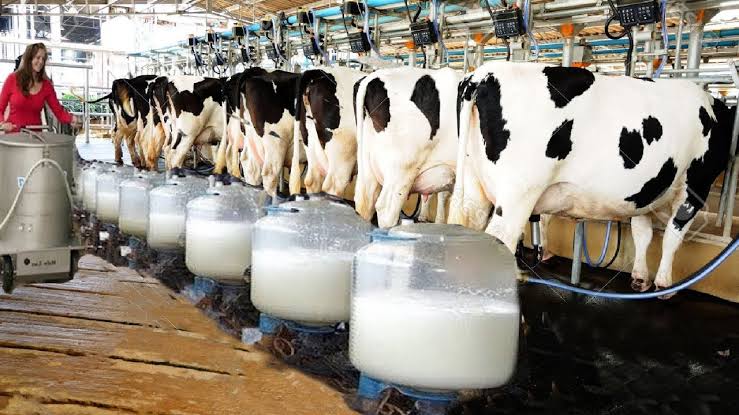The Economics of Small Dairy Farms in Today’s Environment
Dairy farms are an essential agricultural aspect of today’s society. Millions count on the products that come from these farms so why is it that so many small dairy farms are shutting down? The economy of the world has played a role but a lot of the cause is a failure to adapt to the advancements being made in the industry.
Even though there is still a high demand for dairy products, we’ve seen advancements lead to an increase in inefficiency. The problem is that small farms have trouble keeping up with these advancements. Whether it’s a lack of monetary resources to upgrade to the latest dairy farm supplies or a lack of desire to change is up for debate, but the fact is that today’s economics have changed the landscape.
To meet these new challenges, small dairy farmers must understand the obstacles they encounter and how to navigate them.
Understanding the True Value of Dairy
When consumed in moderation, dairy is proven to improve our health. Many countries have systems in place that cause milk to be cheaper than water, even though water has no nutritional value other than hydration. As a result, we see supermarkets willing to sell milk at a loss in order to get people into the store to buy other, more profitable items.
These lower prices have caused major issues for small dairy farmers, who feel forced to match these prices in order to stay afloat. The problem is that large agricultural chains can afford to absorb these lower costs because they regain them through other means. Small dairy farmers do not have this luxury.
With that said, we’re starting to see an upsurge in the perceived value of milk from small farms as the trust for Big Ag dwindles. Consumers are willing to pay more for local milk because they trust that it’s a safer product. Small dairy farms must take advantage of this shift.
Technology makes it as affordable as ever for small farmers to process and bottle their own milk, as well as create and package other dairy products. Due to demand, retailers are making room on their shelves for local dairy products. In consumer-driven economics, price tags are decided by consumer demand. Right now, we’re seeing a demand for local, natural dairy products that small dairy farmers must capitalize on.
Breeding Puts Stress on Small Dairy Farmers
Modern economics has become highly dependent on genetics. While the genetic selection process used today comes with a wide range of benefits that include higher volumes of milk per cow, longer milk production, and uniformity, it does come with a couple of substantial flaws. The most notable downside is that genetic selection introduces a low level of genetic diversity, making them extremely susceptible to pandemics. One virus could utterly devastate the industry.
Furthermore, genetic degradation is also a significant factor. As each new breed is born from genetic management, those calves are almost generic copies of their parents. The more a gene is copied, the less sustainable it becomes.
Small farms feel the pressure that they must keep up with large agricultural companies but the fact is that consumers are starting to demand more natural products. Traditional breeding doesn’t come with bells and whistles, but it’s a time-honored practice that will always have a market.
Lack of Interest from Future Generations
Today’s flashy high-tech world makes the thought of running a small dairy farm less appealing to the newer generations. Farming is seen as a dirty job and with so many other career paths available, more people are choosing the perceived cleaner path.
This has pushed the small dairy industry to the brink of extinction. That means consumers are forced to either choose big agricultural products or pay substantially more to buy from the limited small dairy farms that remain. As this continues, the prices will continue to rise with demand.
Lack of Land Availability
Society continues to grow at an astronomical rate. One of the factors behind the decreasing number of small dairy farmers is that there isn’t as much land available as there was in the past. There are numerous reasons for this including poverty and the distribution of land among descendants. Combined with a lack of demand for small farming as a lifestyle, these new distributed lands are being either sold off to big agricultural companies or repurposed by their new owners.
Cattle don’t have as much room to graze anymore and are forced to remain in one place all day. These issues all compound with a lack of interest, driving the newer generation down other career paths.
Final Thoughts
Small dairy farmers are the backbone of our way of life and have worked hard to improve their standards in a highly volatile economy. We should celebrate them. As we move further into the digital age, it’s essential that they be given the knowledge and tools to stay relevant.
Of course, there are those who will be resistant to change. It’s essential to remember that it’s possible to improve small farms using state-of-the-art tools without compromising integrity. Small dairy farms will always have a consumer market filled with individuals who are willing to pay more for fully natural products.

